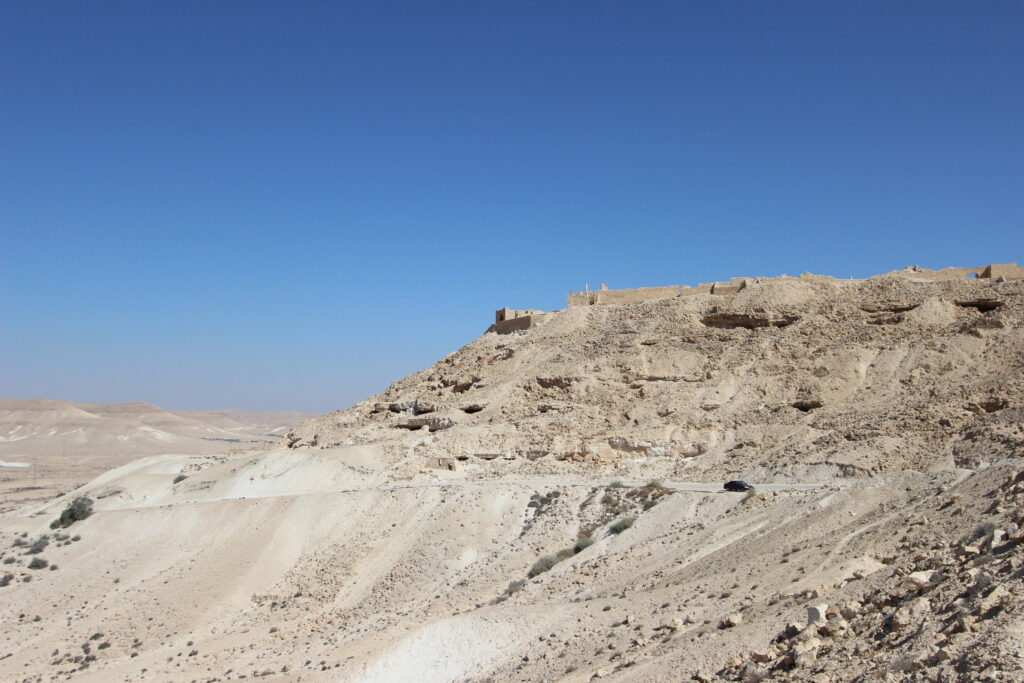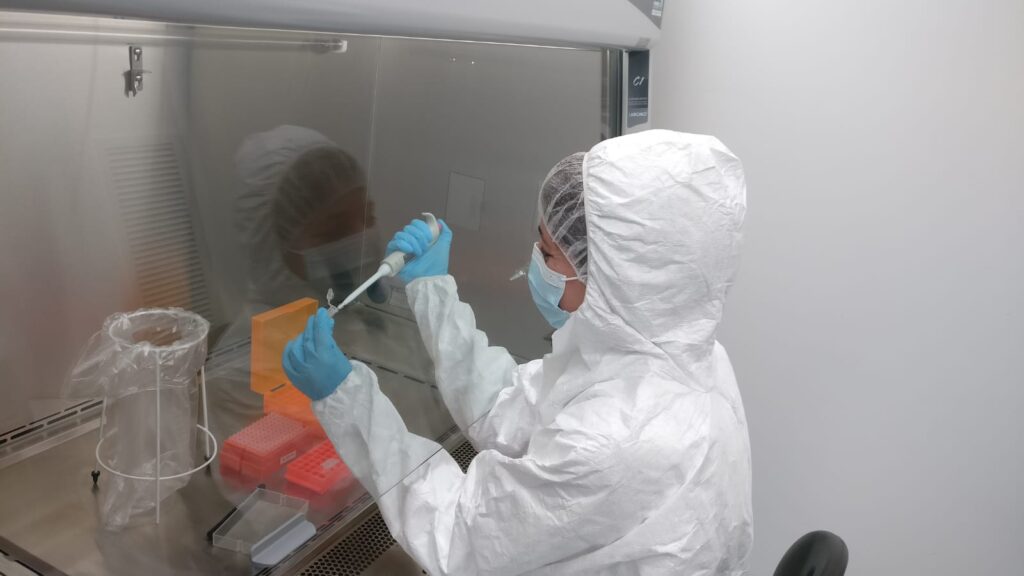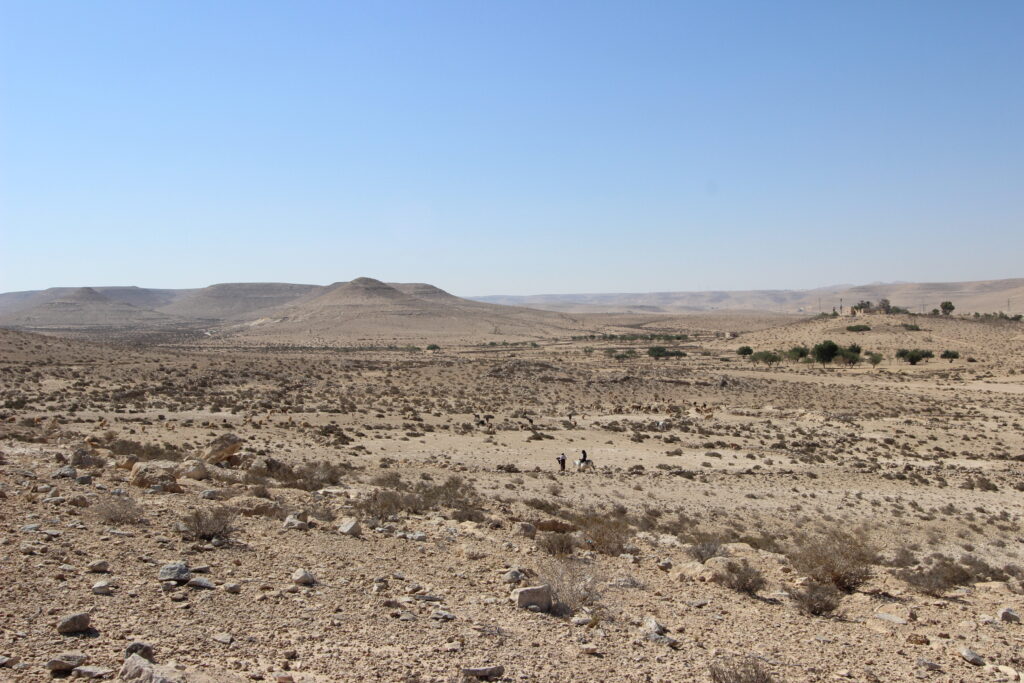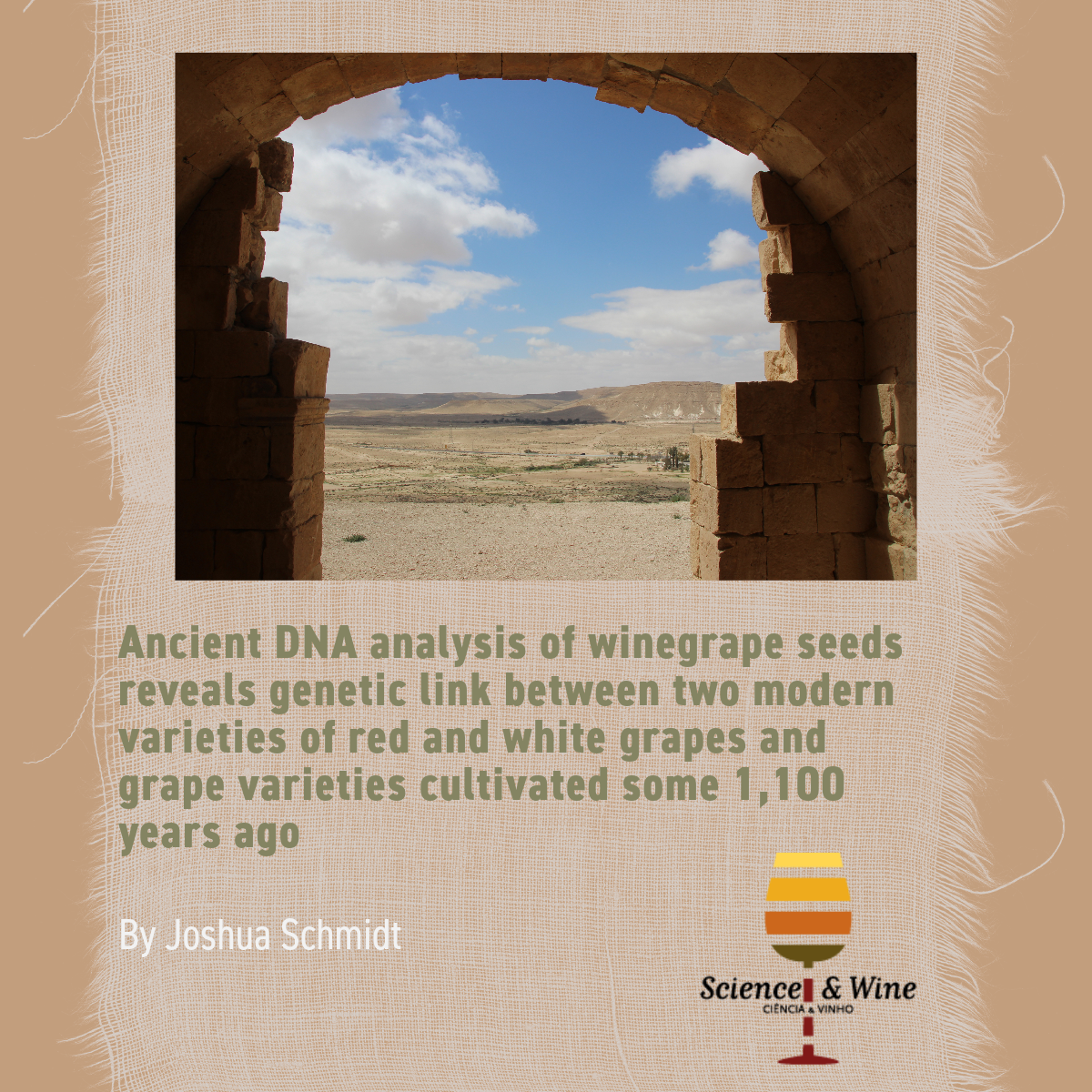By Joshua Schmidt
A new study led by the paleogenomic laboratory of The Steinhardt Museum of Natural History at Tel Aviv University, and the School of Archaeology and Maritime Cultures at the University of Haifa analyzed DNA from ancient local winegrape seeds discovered during an archaeological excavation in the Negev. One seed was found to be almost identical to the Syriki variety used today to make red wine in Greece and Lebanon, while another seed is a relative of the white variety called Be’er, that still grows in deserted vineyards in the dunes of Palmachim in central Israel.

Avdat – ruins of a Byzantine town in the Negev Highlands
The genetic study was led by Dr. Pnina Cohen and Dr. Meirav Meiri who work in the paleogenetic lab at The Steinhardt Museum of Natural History. The seeds were found at archaeological excavations led by Prof. Guy Bar-Oz from the School of Archaeology and Maritime Cultures at the University of Haifa and in collaboration with researchers from the Israel Antiquities Authority. Other participants included researchers from the University of Haifa, the Weizmann Institute, Bar-Ilan University, and research institutions in France, Denmark, and the UK. The paper was published in the leading scientific journal PNAS (Proceedings of the National Academy of Science).

At the paleogenomic laboratory of The Steinhardt Museum of Natural History at Tel Aviv University
Photo credit “Alex Slavenco”
Prof. Guy Bar-Oz: “Archaeological excavations conducted in the Negev in recent years have revealed a flourishing wine industry from the Byzantine and early Arab periods (around the fourth to ninth centuries A.D.), especially at the sites of Shivta, Haluza, Avdat, and Nizana, that were large, thriving cities at the time. The findings include large winepresses, jugs in which the exclusive wine that was exported to Europe, was stored, and grape seeds preserved for more than a thousand years. This industry gradually declined following the Muslim conquest in the 7th century, since Islam forbids the consumption of wine. The cultivation of winegrapes in the Negev was renewed only in modern times, mostly since the 1980s, several decades after the founding of the state of Israel. This industry, however, relies mainly on winegrape varieties imported from Europe.”
One especially interesting finding was a large hoard of grape seeds, discovered on the floor of a sealed room at Avdat, a Byzantine era village on a hill overlooking the surrounding arid desert landscape. The researchers explain that these seeds were relatively well preserved thanks to the dry desert climate. In the hope of discovering which varieties the seeds belong to, the researchers extracted their DNA in a paleogenetic lab.
Dr. Meiri: “The science of paleogenomics uses a range of advanced technologies to analyze ancient genomes, primarily from archaeological findings. Since the DNA molecule is very sensitive and disintegrates over time, especially under high temperatures, we normally get only small pieces of DNA, often in poor states of preservation. To protect them we work under special conditions: paleogenetic work occurs in an especially clean laboratory with a positive air pressure system that keeps contaminants out. The lab is entered after we put on sterilized full body ‘spacesuits’ familiar to everyone from the COVID pandemic.”
To begin with, the researchers looked for any organic matter remaining in the seeds. For this purpose, they used FTIR (Fourier-transform infrared spectroscopy) – a chemical technique applying infrared radiation to produce a light spectrum that identifies the sample’s content. Finding remnants of organic matter in 16 seeds, the researchers went on to extract DNA from these samples.
The extracted DNA was sequenced, and we placed an emphasis on about 10,000 genomic sites (of the nearly half a billion contained in grape seeds!) where variety-specific features are usually found. The results were compared to databases of modern grapevines from around the world. In 11 samples the quality of genetic material was too poor to allow any definite conclusions. Three of the remaining samples were identified as generally belonging to local varieties. Finally, the two highest quality samples, both from around 900 A.D., were identified as belonging to specific local varieties that endured into the present day.

Looking south from Avdat onto defunct terraces that date back to the Byzantine era and are now used as grazing areas for local area Bedouin herders
The discovery was quite extraordinary. One seed was found to belong to Syriki, a known Middle Eastern variety with a long history of cultivation in the Southern Levant and Crete, still used today to make red wine in Lebanon and Greece, where it is fabled to have arrived from the east . Since winegrapes are usually named after their place of origin, it is quite possible that the name Syriki is derived from Nahal Sorek, a prominent stream that ran down from the Judean Hills and into the Mediterranean Sea. Moreover, this variety may even appear in the Bible – in Jacob’s blessing to his son Judah: “He will tether his donkey to a vine, his colt to the choicest branch (in Hebrew, “soreka”); he will wash his garments in wine, his robes in the blood of grapes (Genesis 49, 11) – and perhaps also suggested in the giant cluster of grapes brought back by the spies sent by Moses to explore the Land of Cana’an: “When they reached the Valley of Eshkol (identified by some as Nahal Sorek), they cut off a branch bearing a single cluster of grapes. Two of them carried it on a pole between them” (Numbers 13, 23).

A row of carbernet sauvignon grapevines ripening in the Kerem Ramon vineyards that are situated atop earlier Byzantine era farmsteads, where 1500 years ago grapes were also grown.
The second high-quality seed was identified as related to Be’er, a white winegrape variety still growing in remnants of vineyards probably abandoned in the mid- 20th century in the sands of Palmachim on Israel’s southwestern coast. The researchers used the grape seed genome to determine the color of the fruit, discovering that it was a white grape. This is the oldest botanical specimen of a white variety ever identified. Having gotten wind of this discover, the Barkan winery is using the Be’er, a local variety that is apparently native to the land of Israel, to make a special series of white wine.
Dr. Meiri: “The wonderful thing about paleogenetics is that sometimes, tiny items can tell a big story. This is exactly what happened in this study. With just a bit of DNA extracted from two grape seeds we were able to trace millennium old continuity in the local wine industry – from the Byzantine period, more than a thousand years ago, to the contemporary moment. We believe that our findings are also significant for Israel’s modern wine industry, that is rapidly developing. Today most varieties grown here were imported from Europe, so that the local conditions are not always optimal for them. Native varieties may be more suitable for the local climate and soil, especially in the desert region of the Negev. Our study establishes a novel route for restoring and improving ancient local varieties with the intention of creating winegrapes that are better able to contend with the climatic challenges such as high temperatures and insufficient rainfall.”
Joshua Schmidt is a culture anthropologist having received his doctorate from the Department of Behavioral Sciences at Ben-Gurion University of the Negev, Israel. His diverse research projects focus on an intersecting range of transdisciplinary topics that currently include the sociology of tourism, heritage and conservation management, the preservation of ancient rock art, bolstering business sector disaster preparation and response, ethno-linguistics, socio-economic development and the politics of empowerment among peripheral communities, Negev Bedouin marginality, heritage horticulture and the intergenerational geographies of Negev viticulture. A research affiliate in the Zinman Institute of Archaeology at the University of Haifa, Israel, Schmidt is currently compiling an ampelography of native grapes from the Holy Land.

